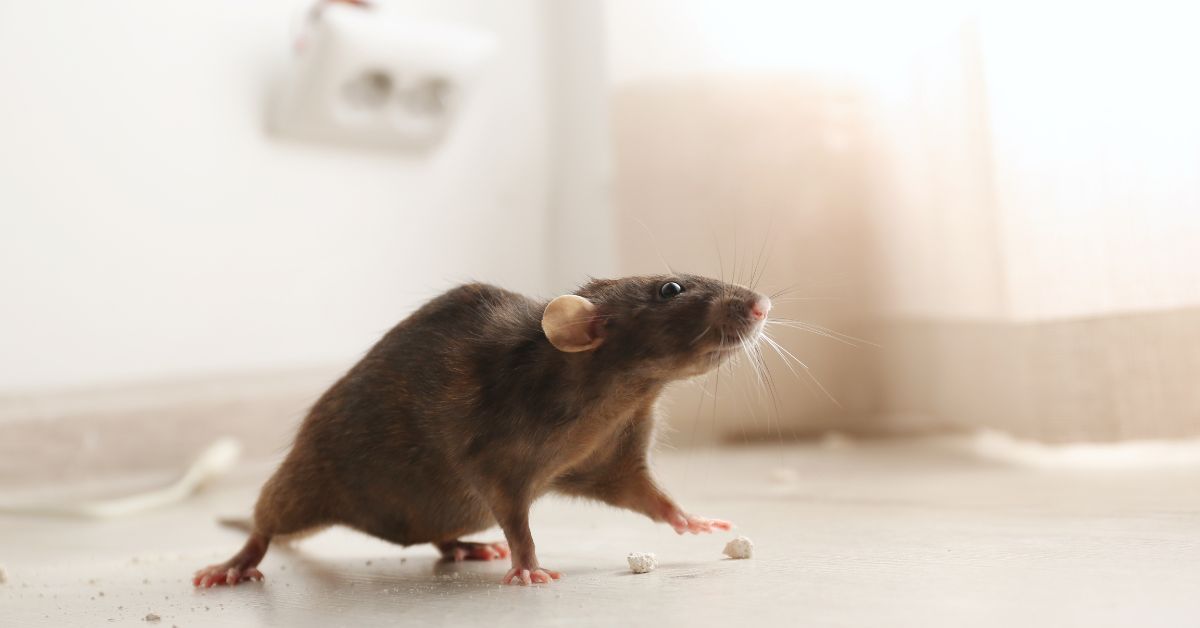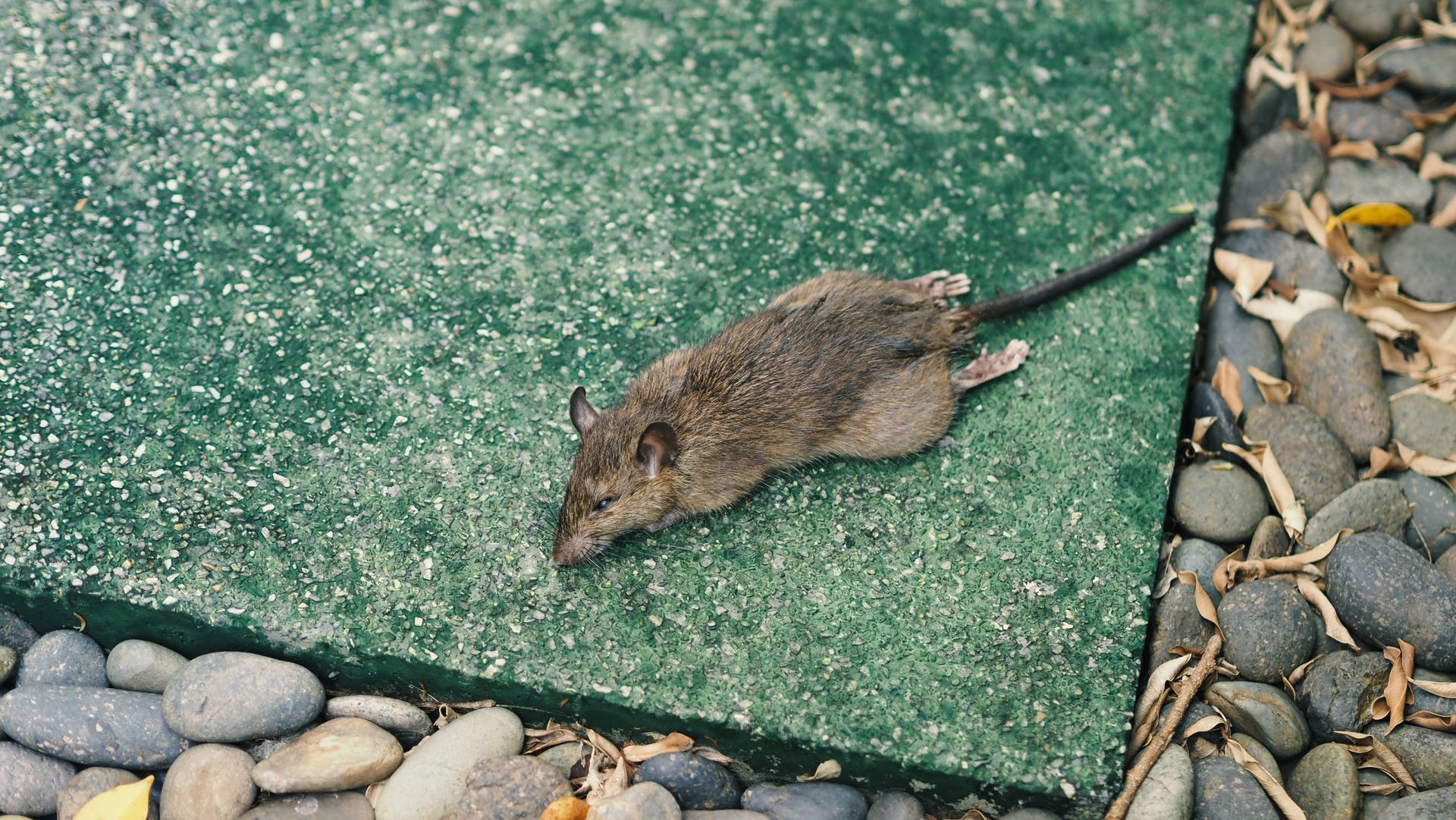Squeaks in the Night: Decoding the Telltale Signs of a Rodent Infestation
In the tranquility of the night, when the world hushes into a peaceful silence, mysterious sounds can often disrupt the serenity of your home. Those subtle squeaks, akin to tiny creatures orchestrating their nocturnal symphony, and the unmistakable sound of tiny feet scurrying across the floors or within the walls may be more than just a minor annoyance. In fact, these sounds could be cryptic indicators of a potential rodent infestation, a stealthy invasion that can unravel within the sacred walls of your abode. Welcome to a comprehensive guide, an enlightening journey crafted in collaboration with
Eyring Pest Control, where we don our detective hats and delve deep into the enigmatic world of rodents. Our mission: to empower you with the knowledge to identify and thwart these unwelcome visitors before they evolve from minor nuisances to major problems, infiltrating spaces from the lofty attic to the heart of the pantry. Join us on this nocturnal expedition as we decipher the subtle cues that echo in the silence of the night, unraveling the secrets these sounds may hold and shedding light on the path to effective rodent control.
The Symphony of the Night: Decoding Nocturnal Sounds
In the realm of nocturnal mystery, the night unfolds with an orchestration of sounds that can be both captivating and concerning. Scratching in walls or ceilings during the night is often the first sign that rodents have taken residence. The distinct noise of tiny claws against surfaces can be unnerving, especially when it persists. Audible scurrying noises, especially when the lights go out, indicate nocturnal activities. These sounds are a result of rodents foraging for food, exploring their territory, or seeking nesting materials. Pitter-patter sounds echoing from the attic or crawl spaces suggest a larger rodent, possibly a rat, navigating through tight spaces. This is a clear indication that your home may have become a playground for these unwelcome critters.
Scratching Sounds and Nocturnal Activities:
Rodents, creatures of the night, tend to be most active during the dark hours. If you find yourself being serenaded by scratching or scurrying sounds within your walls or ceilings, it's a strong signal that your home might be playing host to these unwanted guests.
Identifying the Sounds
- Scratching in walls or ceilings during the night is often the first sign that rodents have taken residence. The distinct noise of tiny claws against surfaces can be unnerving, especially when it persists.
- Audible scurrying noises, especially when the lights go out, indicate nocturnal activities. These sounds are a result of rodents foraging for food, exploring their territory, or seeking nesting materials.
- Pitter-patter sounds echoing from the attic or crawl spaces suggest a larger rodent, possibly a rat, navigating through tight spaces. This is a clear indication that your home may have become a playground for these unwelcome critters.
Gnawed Items and Property Damage:
Rodents have a compulsive need to gnaw on various objects to keep their teeth in check. This habit often leaves a trail of gnawed items and property damage in their wake.
Common Signs of Gnawing
- Chewed electrical wires posing potential safety hazards. Rodents, especially rats, are known for their affinity for gnawing on wiring, which can lead to electrical malfunctions or, worse, fire hazards.
- Gnawed furniture or wooden structures in hidden corners. The damage may not always be immediately visible, but if you notice irregularities in the corners of wooden furniture or structures, it's worth investigating for rodent activity.
- Bitten corners of food packaging in the pantry or kitchen. Rodents are persistent scavengers, and their sharp teeth can easily puncture through packaging. Finding torn or bitten corners of food containers is a clear indication of their presence.
Droppings and Urine Odor:
One of the most tangible signs of a rodent infestation is the presence of their droppings. Understanding how to identify these droppings and recognizing the associated urine odor is crucial in confirming a potential rodent issue.
Identifying Rodent Droppings
- Understanding variations in size, shape, and color is essential. Mouse droppings are small, resembling dark grains of rice, while rat droppings are larger and more cylindrical.
- Locating droppings in common areas like kitchens and storage spaces. Frequent rodent activity areas include pantries, cabinets, and areas where food is stored.
- Recognizing the pungent odor of rodent urine as a clear sign. The strong, ammonia-like smell of urine can be particularly noticeable in confined spaces or areas where rodents frequent.
Nests and Shredded Materials:
Rodents seek out cozy, secluded spaces to build their nests, using shredded materials for insulation. Discovering nests or coming across shredded items in hidden corners of your home could point to a growing rodent population.
Uncovering Rodent Nests
- Inspecting common nesting spots like attics and crawl spaces. Rodents prefer quiet, undisturbed areas for their nests, and attics or crawl spaces provide the perfect environment.
- Identifying materials rodents use for nest-building. Common materials include shredded paper, fabric, or insulation. Finding these materials in unusual places is a red flag.
- Recognizing signs of nesting activity such as accumulated nesting materials. The presence of a well-constructed nest indicates a sustained rodent presence and the likelihood of a growing population.
Tracks and Smudge Marks:
Rodents leave behind tracks and smudge marks as they navigate through your home. Learning to identify these subtle clues can help you trace their movements and devise a targeted pest control strategy.
Tracing Rodent Tracks
- Identifying footprints and tail marks in dust or mud. This requires a keen eye, but identifying these tracks can help determine the type of rodent and its size.
- Locating tracks in areas where rodents frequent. Common areas include entry points, food storage locations, and nesting spots.
- Recognizing smudge marks along walls and baseboards as indicators of their paths. Rodents often leave grease and dirt marks as they brush against surfaces, creating visible trails along their regular routes.
Unexplained Pet Behavior:
Pets, especially cats and dogs, often possess a heightened sense of awareness when it comes to detecting rodents. Pay attention to any changes in your pet's behavior, as they may provide valuable cues about a potential rodent infestation.
Observing Pet Reactions
- Increased alertness or agitation, especially during the night, suggests that your pet may sense the presence of rodents. Pay attention to their behavior, especially if it seems focused on specific areas of your home.
- Unusual barking or scratching at specific areas. Dogs, in particular, may exhibit heightened protective instincts when they sense rodents. Persistent barking or scratching in one area may indicate rodent activity.
- Discovering your pet's innate hunting instincts in action. Cats, known for their hunting prowess, may start displaying behaviors such as stalking or pouncing in response to the presence of rodents.
Conclusion
In the ongoing battle against rodent infestations, early detection remains your most potent weapon. By staying vigilant for the signs discussed in this extensive guide, you can proactively address rodent issues and safeguard your home. If you suspect a rodent infestation or need professional assistance, don't hesitate to reach out to Eyring Pest Control at
385-290-9782. Remember, a swift response today can prevent a larger problem tomorrow, ensuring your home remains a sanctuary free from unwanted guests. Sleep tight, and rodent-free nights await!
FAQs
-
What are the common signs that indicate a potential rodent infestation in my home, and how can I differentiate them from other pests?
Common signs include droppings, gnaw marks, nests, and squeaking sounds. Rodents leave distinct signs that differ from those of other pests. Understanding these signs can help identify a potential rodent infestation.
-
How quickly can a rodent infestation escalate, and what steps can I take to prevent it from spreading further?
Rodent infestations can escalate rapidly due to their rapid reproduction. To prevent further spread, address food sources, seal entry points, and promptly remove potential nesting sites. Seeking professional pest control services is advisable for comprehensive eradication.
-
Are there specific areas of the home that are more susceptible to rodent infestations, and how can I fortify these areas to prevent entry?
Rodents are attracted to areas with easy access to food and shelter. Key areas include kitchens, attics, and basements. Fortify these areas by sealing cracks, storing food in airtight containers, and eliminating clutter that can serve as nesting sites.
-
What health risks are associated with a rodent infestation, and how can I protect my family from potential diseases?
Rodents carry diseases that can be transmitted to humans through bites, scratches, or contact with their urine and droppings. Protect your family by practicing good hygiene, promptly addressing signs of infestation, and seeking professional pest control services for safe eradication.
-
Can I handle rodent removal on my own, or is professional pest control necessary, and what methods do professionals use for effective eradication?
While DIY methods may provide temporary relief, professional pest control is recommended for effective and long-lasting eradication. Professionals use a combination of traps, baits, and exclusion methods to eliminate rodents and prevent future infestations.
Our Recent Articles


Eyring Pest, All Rights Reserved.


